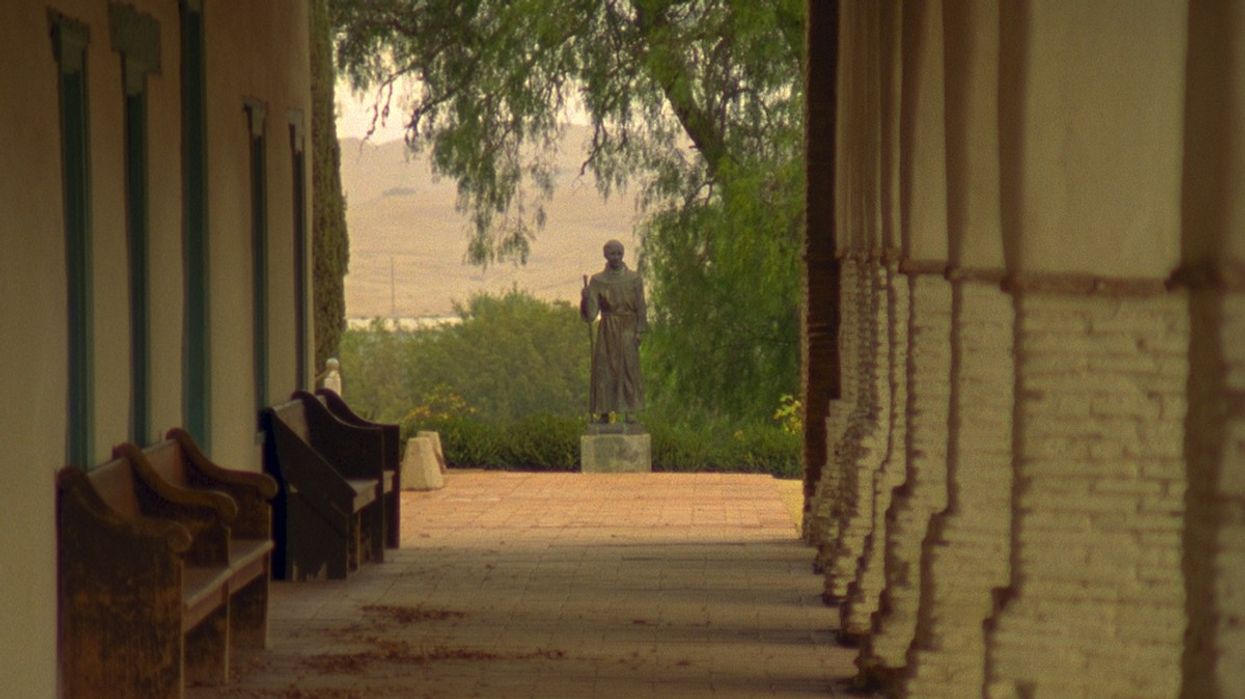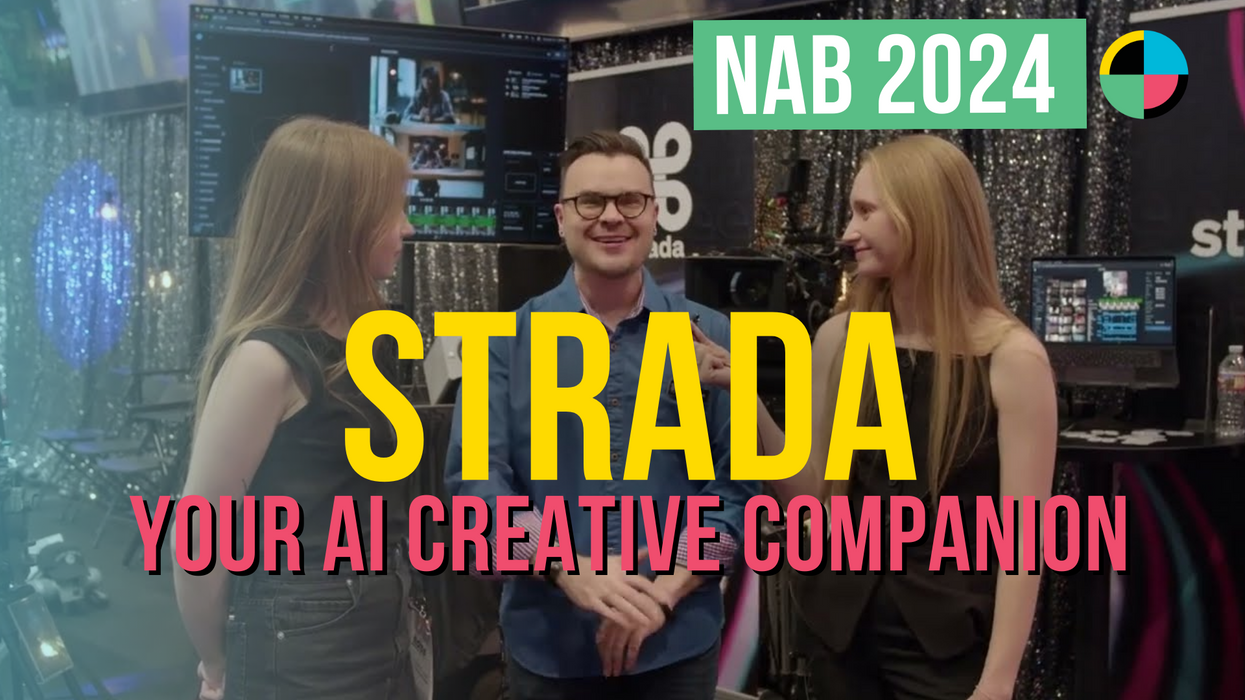Why I Shot My Sundance Feature Doc with 16mm Film
Call me a luddite, but I prefer "Keeper of the Analog."

[Editor’s Note: Filmmaker Jenni Olson wrote this essay in defense of 16mm for No Film School in advance of the DVD/VOD release of her documentaryThe Royal Road.]
I’m convinced that viewers are impacted emotionally and psychologically as they experience the images produced by shooting on regular 16mm film. The 4:3 aspect ratio (as distinct from Super 16mm with its wider aspect ratio), the grain of the film image, and the color qualities of 50 daylight film stock all contribute to a set of feelings akin to nostalgia—evoking a calmer, quieter time in one’s own life.
This is an aspect of my filmmaking strategy: to create the space for you as the viewer to bring forward your own associations, memories and feelings—and to be in a relationship with the film that is uniquely yours. All of these reasons play a role in making shooting with 16mm film an organic component of my vision as an artist.

A calmer, quieter atmosphere is also constructed via the content and themes of the images on the screen. In particular, the urban landscapes of San Francisco and Los Angeles serve as the raw material for my new film,The Royal Road. It consists of a mere 90 shots in 65 minutes, all showcasing architecture, streets and exteriors, mostly in lengthy takes and always from an unmoving camera.
4:3 creates a conscientious crop
The simple, contemplative shots in The Royal Road might also best be defined by the things I’m cropping out. I try to eliminate or downplay such contemporary urban stressors as billboards and advertising and our elaborate modern traffic management signifiers. My shots are also devoid of human figures—enhancing a sense of solitude and contributing further to an overall meditative tone.
Whether residential or industrial, streetscape or building, I aspire to frame landscapes that evoke the analog technologies associated with a pre-digital era: telephone poles, train tracks, bridges, roadways and the structures of industry.
Celluloid gives art an aura
In his pioneering 1936 essay, “The Work of Art in the Age of Mechanical Reproduction,” cultural critic Walter Benjamin describes the idea that only a painting, sculpture or singularly created original work of art can be thought of as possessing an “aura” (that unique non-reproducible quality of an original work of art which, for instance, a photograph of that artwork does not possess). He goes on to point out the ways in which photographs lack an aura due to their mechanically reproducible nature.
In 2005, when I made my first experimental feature, The Joy of Life (which I also chose to shoot on 16mm film) I began to develop a new updated version of Benjamin’s thesis. If 1936 was the age of mechanical reproduction, certainly 2005 (and now 2015 with the transition to digital projection in all mainstream cinemas and the ascension of digital video and still cameras) marked a new age of digital reproduction.
In relation to digital reproduction, the medium of film cinematography can now be said to possess an aura. The nature of that aura has changed from Benjamin’s era, and I would say now arises primarily from film’s physical existence—it can be touched, scratched, accumulate dust upon its celluloid surface, and the photochemical nature of its image means it can (and will) change over time based on such factors as exposure to heat and light and humidity. This is true of both the original (the negative) and Benjamin’s mechanically reproducible copy. Which means that each film print will change uniquely over time and is therefore—I believe—imbued with a singular aura.
The fiery blossoming that penetrates the celluloid as the burning hot arc lamp of the projector incinerates the plastic is one of the most frightening of cinematic moments.
Film makes moviegoing into a singular experience
It is also true that each screening of the film (like an on-stage performance of a play) is a singular, performative experience inasmuch as it occurs by way of a method of physical projection which impacts that print in time and space. New dust and dirt are introduced onto the print, scratches and imperfections occur as the film passes through the projection gate and spools onto the take-up reel. We can even hear this impact in the crackle of the soundtrack.
My point is that, even without this most drastic form of wear and tear on the film, the print changes over time, thereby giving a slightly different experience to each viewer every single time it’s shown. In the case of certain color films from the ‘50s, ‘60s and ‘70s, the phenomenon of the pink or red print is well-known to archivists and collectors. In these cases, due to shortcomings in the printing process, all colors except for the magenta part of the spectrum have faded over time (a problem which ended with the invention of the Technicolor printing process).
The difference between history and nostalgia is sentiment.
Naturally, nostalgia plays a role
As I head down the path of these vivid nostalgic descriptions, I am giving the mistaken impression that an exhibition print of my film even exists (I confess it was all finished on digital and will never burst into flame from the heat of a projector nor fade to pink with the ages).
And this is the point in my thesis where I falter and realize that: Yes, the digital image also can be impacted by its existence in space and time—in more ways than I am even aware of, I’m sure.
It’s true that nostalgia and historical associations are a fundamental part of this argument. I would make the case that the same is true of Benjamin’s thesis. And neither of us need apologize for this. The difference between history and nostalgia is sentiment. And even in the telling of history, there is often no shortage of emotion.
An iconic San Francisco view shot with 16mm for 'The Royal Road'
There are these observable facts, and then there are the subjective facets of our personal experiences as viewers, as audiences, and as artists. I cannot separate the personal associations of seeing films in my lifetime from whatever objective claims I might want to make about the unique qualities of the moving image as projected via actual film.
When it comes down to it, I simply prefer the general capacity of film cameras and lenses, film stocks and print stocks in terms of the qualities they achieve in depth of field, grain of the image, range of contrast and saturation of hues. These qualities are different in the digital image. I have the impulse to claim the superiority of the analog but I know this is really only a matter of preference and that, in many categories, the digital could be said to be objectively superior. This seeming contradiction is at the heart of my contention about “aura.” If digital really is “better,” then why does my entire subjective experience tell me that it is not?
Is this not the very nature of how we experience technologies over time? I willingly brave the accusation of being a luddite. And confidently proclaim that I am not. Rather, call me "Keeper of the Analog."
Jenni Olson is a pioneering filmmaker, journalist, curator and film historian. Her film ‘The Royal Road’ premiered at Sundance 2015 and was released on September 6th on DVD / VOD, across all digital platforms.













